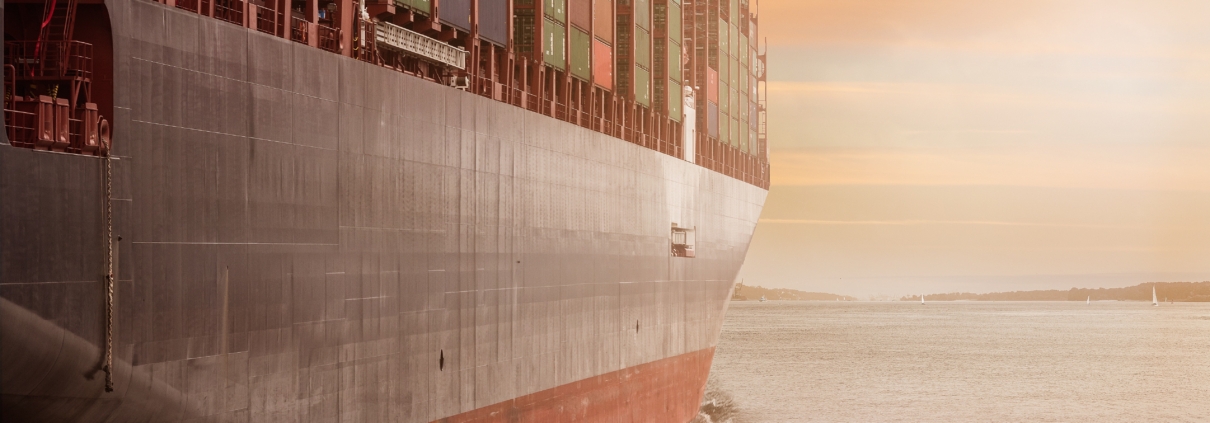Supply Chain Reaction
Here’s What You Need To Know
Will there be anything under the Christmas tree this year? If you follow the news, you’re probably worried supply chain issues will be this year’s Grinch. Beyond holiday fears, however, there are even bigger supply chain worries for a wide range of industries whose effects will reverberate long after New Year’s Eve.
A recent survey commissioned by Oracle found 82 percent of Americans are scared supply chain issues will “ruin their life plans,” and policymakers are taking notice. While COVID-19 complications have added strain, there are many other factors that have significantly contributed over time to the breakdown we’re experiencing today. As a result, organizations now face significant and compounding operational risks, and governmental policy pressure at the behest of the American people could bring even more challenges.
As public affairs professionals help companies and industries navigate this policy response, here’s what you need to know about how we got here and what happens next.
Subscribe to Receive Insights
"*" indicates required fields
There Were Many Cracks in the Supply Chain Before COVID, and the Weight of the Pandemic Broke It
HOW WE GOT HERE: From aging ports to hard-to-find workers to high regulatory burdens, there were systematic issues imperiling the global supply chain long before the onset of the pandemic, including:
- NO PORT OF CALL: The U.S. Federal Maritime Commission (FMC) expressed concerns that the quality of American ports threatened the security of the nation’s supply chain as early as 2015, warning “congestion at ports and other points in the nation’s intermodal system has become a serious risk factor to the relatively robust growth of the American economy and to its competitive position.” Indeed, no American ports made the 2020 World Bank/IHS Markit “Container Port Performance Index” ranking the top 50 global ports for quick and efficient ship turnaround.
- TRANSPORTATION LABOR PAINS: In an effort to cut costs, railroads reduced their workforce by more than 22 percent from 2017 to 2021, and large rail companies have struggled to bring workers back amid rising consumer demand in recent years. Meanwhile, the trucking industry has repeatedly sounded the alarm about its desperate need for drivers. What was a 60,000-driver shortage before the pandemic has exploded to a projected 105,000-driver deficit by 2023, which industry representatives blame in part on months-long backlogs obtaining commercial driver’s licenses from state Departments of Motor Vehicles.
- ALL SUPPLY CHAINS ARE LOCAL: Many import challenges center upon the management of ports at Los Angeles and Long Beach, which according to Reuters “handle the most ocean cargo of any ports in the United States, but are some of the least efficient in the world.” Experts say the lack of efficiency is in part due to local labor, zoning, and environmental ordinances, such as Long Beach prohibiting the stacking of more than two containers high to protect scenic ocean views (though this rule has been temporarily lifted to four containers high), the state’s controversial AB-5 labor law keeping independent truckers off the road, and state air quality regulations constraining the number of trucks allowed at warehouse facilities. Last week, California ports saw a record backlog of 111 container ships awaiting entry, despite operating 24/7 at the direction of President Biden. In fact, just 60 percent of the round-the-clock spots have been used to offload goods due to “burdensome” processes.
PANDEMIC PANDEMONIUM: The pandemic created new and exacerbated existing impediments to Americans’ access to needed materials that hinge upon the ever-changing conditions in foreign countries. In fact, a single case of coronavirus shut down China’s Ningbo-Zhoushan Port, causing a two-week shuttering of the world’s third-largest cargo port that serves as a “big gateway for Chinese exports … headed to markets in the U.S. and Europe.” With Americans already facing lengthy wait times for these key items, such lockdowns – like the increasingly stringent ones bringing factories in Vietnam to a screeching halt – have “paralyzed commercial activity and added stress to a strained global supply chain.”
As Americans Feel the Supply Chain Strains, Shifting Political Dynamics Mean More Pressure on Companies and Industries Operating Globally
THE GHOSTS OF GLOBALIZATION: According to The Wall Street Journal, for the past several decades, America’s financial system of robust credit and financial interconnectivity allowed companies to “adopt outsourcing and offshoring, just-in-time inventories and ‘capital light’ models that split design from production.” The COVID-era supply chain challenges are bringing scrutiny to these practices from policymakers, the media, and consumers. They are also bolstering corporate critics, who claim “monopolistic tendencies” in pursuit of big profits inflicted “choke points” throughout the supply chain, while industry consolidation has made shipping slower and more expensive.
FALTERING FIREWALL AMIDST NEW POLICY CONSENSUS: While Republicans have traditionally served as a free markets firewall against Democrats’ tactics to force the repatriation of American companies, there are now voices across the ideological spectrum proposing governmental actions to “reshore” critical materials and manufacturing. While some conservatives cite national security implications, others are calling for “common good capitalism,” as Sen. Marco Rubio (R-Fla.) calls it, that protects American jobs and economic security over corporate profits. This creates an unusual synergy with Democrats who have spent decades chiding American businesses they claim headed offshore to avoid high costs of labor and labor union influence, resulting in a momentum to do something that is hard for businesses to combat. While historically Republicans sought to repatriate American companies operating abroad by enticing them with tax reform, easing regulatory burdens, and loosening control of labor unions, Democrats have long championed punitive measures that would force companies to return stateside or face steep taxes and penalties. On the campaign trail and throughout his presidency, President Biden has advocated for a hybrid approach of credits and fees, punishing offshoring while incentivizing job creation at home with tax relief. The ultimate policy solution is likely to be a combination of carrots and sticks decided by a select few lawmakers amid razor-thin majorities.
RISKS IN RESHORING: With companies facing more questions about maintaining global supply chains, it is no surprise a recent Deloitte survey found 75 percent of companies are accelerating their plans to reshore. For those who actually end up doing so, the road home is lined with big expectations. Greater public scrutiny of corporate actions means these organizations will need to keep the promises they make on local investment and hiring when accepting the government incentivizes for their return. Meanwhile, would-be domestic competitors and investors who want to back them are hoping to take advantage of these same incentives to create new projects without all the costs and hassle of the repatriation process. In recent years, however, such benefits have become increasingly unpopular among the American people, so any government action that could be seen as a “handout” to corporations will indubitably invite public skepticism.
For public affairs professionals, the supply chain crisis presents both short-term and long-term challenges, from navigating current scrutiny to weighing reshoring in the long run. These are the kinds of risks Delve asses for our clients, ensuring them have the information they need to make the best decisions possible to navigate uncertainty. Whether your organization is enduring the pains of the current supply chain crisis or working hard to avoid the next one, we’re here to help turn them into opportunities.



